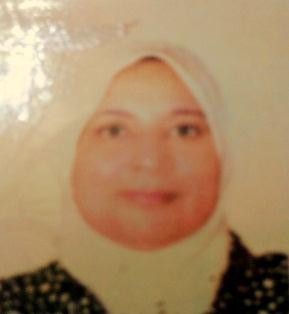Therapeutic potentials of cord blood mononuclear cells transplantation for limb ischemia . A comparison between CD34+ and CD 34- cells: HMS Eldien, OAE Hussein, S Hassan , A Osama. AM Sayed, HA Abo=Elwafa, BA Abdel-Wahab. Cytotherapy Journal of cell therapy . May 2017 vol.19 issue 5 PS75. Doi: http//dx.doi.org/10.1016/j.j cyt 2017.02.115
Abstract:
Register and Claim Your Subscription
Top of Form
Search Terms Search within All Content Article Title, Abstract, Keywords Authors Article Title Abstract Search Advanced Search
Bottom of Form
Access provided by Consortium Egypt - Cairo University
May 2017Volume 19, Issue 5, Supplement, Page S75
Therapeutic potentials of cord blood mononuclear cells transplantation for limb ischemia. A comparison between CD34+ and CD34− cells
H.M.S. Eldien
,
O.A.E. Hussein
,
- Hassan
,
- Osama
,
A.M. Sayed
,
H.A. Abo-Elwafa
,
B.A. Abdel-Wahab
DOI: http://dx.doi.org/10.1016/j.jcyt.2017.02.115
Background: Cord blood -derived CD34+ cells are a well-characterized population of stem cells. Also peripheral blood mononuclear cells (MNCs) improves limb ischemia in patients with arteriosclerosis however technique of isolation CD34+ cells is highly cost in comparison to that of MNCS . Recently, CD34+ cells have also been shown to induce therapeutic angiogenesis in animal models of myocardial, peripheral, and cerebral ischemia. The mechanism by which CD34+ cells promote therapeutic angiogenesis is not completely understood, although evidence supports both direct incorporation of the cells into the expanding vasculature and paracrine secretion of angiogenic growth factors that support the developing microvasculature. Also, the mechanism of action of PBMNCs remains elusive. This work aims at determine cost benefit ratio of using three types of cell therapy in animal model of ischemia reperfusion through assay ischemic, apoptotic and fibrotic changes and how these changes will be ameliorated after cell therapy in ischemic animals.
Material and Methods: Three groups of rats were intramuscularly injected into the unilateral ischemic hindlimb by Cord blood -derived CD34+ cells, cord blood mononuclear cells (MNCs)and CD34−depleted MNCs then 7, 14 and 28 after operation samples were taken from muscle.
Methods: Age-matched rats underwent 1.5 hours of unilateral hind limb ischemia, followed by 7, 14,28 days of reperfusion .Histologic analysis of skeletal muscle fiber injury was assessed. Morphologic evidence of muscular fiber maturation was assessed by myogenin, using IHC. Markers of angiogenesis, as VEGF, and Caspase to assess apoptosis using RT PCR, at 7, 14, 28 days . Also were measured fibrosis using histochemistry and Western blots . RESULTS:, endothelial cell apoptosis and interstitial fibrosis were significantly attenuated by CD34+ cells, This study demonstrates that a low number of CD34+ cells favors reparative neovascularization and possibly myogenesis in limb ischemia, suggesting the potential use of this cell population in regenerative medicine. Lag in muscle r evels of myogenin and an increased level of caspase as well as fibrosis in the rats, also these changes more ameliorated by CD34 treatement in comparison to those treated by MNCs or CD34−ve cells.
Conclusion: The depletion of CD34+ cells attenuated the therapeutic efficiency of MNCs in response to ischemia-induced neovascularization.
Access this article on
Article Tools
- PDF (123 KB)
- Email Article
- Add to My Reading List
- Export Citation
- Create Citation Alert
- Cited by in Scopus (0)
- Request Permissions
- Order Reprints(100 minimum order)
Related Articles
Top of Form
Cytotherapy, Vol. 19, Issue 5
Cytotherapy, Vol. 18, Issue 6
Cytotherapy, Vol. 18, Issue 6
Cytotherapy, Vol. 18, Issue 10
Cytotherapy, Vol. 18, Issue 9
Bottom of Form
May 2017Volume 19, Issue 5, Supplement, Page S75
Copyright © 2017 Elsevier Inc. All rights reserved. | Privacy Policy | Terms & Conditions | Use of Cookies | About Us | Help & Contact
The content on this site is intended for health professionals.
Advertisements on this site do not constitute a guarantee or endorsement by the journal, Association, or publisher of the quality or value of such product or of the claims made for it by its manufacturer.

